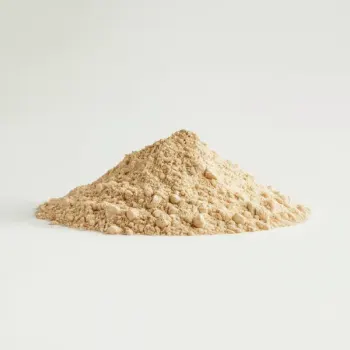All Purpose Flour and Spelt Flour are two types of flour used in cooking and baking, each offering different flavors and nutritional benefits suitable for various recipes.

All Purpose Flour, also known as AP Flour, is a blend of hard and soft wheat milled to create a versatile flour suitable for a wide range of cooking and baking applications. It's a pantry staple in many households due to its flexibility and shelf life.

Spelt Flour is made from spelt, an ancient grain with a nutty flavor. It's known for its nutritional benefits, including higher protein and fiber content compared to traditional wheat flours. It's a favorite among those seeking whole grain, less processed options.
All Purpose Flour is a refined flour with a neutral taste and is designed to produce consistent results in a variety of recipes. Spelt Flour, on the other hand, has a distinct, nuttier flavor and a denser texture. It is less processed and often considered more nutritious due to its higher protein and fiber content. The gluten structure in spelt is also different, which can affect the texture of baked goods.

Your ultimate Recipe Box, Meal Planner, and Cooking Class all in one
In bread baking, All Purpose Flour yields a lighter, softer texture suitable for classic white loaves, dinner rolls, and pizza dough. It's also easier to work with for beginners due to its forgiving gluten structure. Spelt Flour is best used for artisanal or whole grain breads, offering a hearty texture and rich flavor. It absorbs more water, so recipes may need adjustment. Spelt breads also tend to be denser with a crumbly texture.
For pastries and cakes, All Purpose Flour is often preferred for its ability to create tender, fluffy textures. It's ideal for recipes like pound cakes, muffins, and pie crusts where a delicate crumb is desired. Spelt Flour can be used in pastries and cakes for a wholesome twist, resulting in a denser product with a distinct flavor. It works well in recipes with strong flavors, such as carrot cake or spice muffins, which complement its nuttiness.
All Purpose Flour serves as an excellent thickener for sauces, gravies, and soups due to its fine texture and neutral flavor, which doesn't overshadow the primary ingredients. Spelt Flour can also be used to thicken dishes, though it may introduce a slight earthy flavor and require more attention to prevent clumping due to its coarser grind.
You can substitute Spelt Flour for All Purpose Flour in most recipes, usually with a 1:1 ratio. However, expect a denser, more textured result. When using spelt, you may need to increase hydration in the recipe, as spelt absorbs more liquid. In delicate pastries or cakes, substituting can significantly alter the texture, so it's best to begin with partial substitutions until you achieve the desired outcome.
Spelt Flour often comes out ahead in nutritional comparisons due to its higher protein and fiber content.
| Nutrient | Spelt Flour ( per 100g ) | All Purpose Flour ( per 100g ) |
|---|---|---|
| Fat | 2.5g | 1g |
| Fiber | 11g | 3g |
| Sodium | 8mg | 2mg |
| Calcium | 27mg | 15mg |
| Protein | 14g | 10g |
| Calories | 339 | 364 |
| Carbohydrates | 70g | 76g |
Spelt Flour is often considered healthier due to its higher protein and fiber content, and it is less processed compared to All Purpose Flour.
Yes, Spelt Flour can be used to make bread, but it will result in a denser loaf with a nutty flavor and may require adjustments to hydration levels.
Usually, you can substitute Spelt Flour for All Purpose Flour in a 1:1 ratio but adjustments may be needed for liquid amounts due to spelt's higher absorption rate.
Spelt Flour can be used for most types of baking, though it's best in recipes that can handle a denser, more textured result, like bread and certain cakes.
Yes, Spelt Flour has a distinct, nutty flavor which can enhance the taste profile of baked goods, especially whole grain recipes.